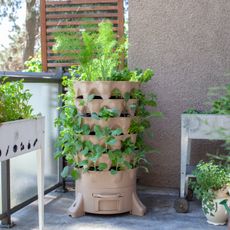What Is White Campion & How To Control White Campion Weeds
It has pretty flowers, but white campion is a weed. If you see flowers the next step is seed production. If this plant has appeared on your property you'll want to take some control measures.

It does have perky white flowers, but white campion is most definitely a weed? Flowers on the plant signal seed production, so it's important to take some control measures before this happens.
What is White Campion?
White campion (Silene latifolia syn. Silene alba) is a broadleaf plant (dicot) that first grows in the form of a low-to-the-ground rosette. Later, it bolts and produces 1 to 4 foot (0.3-1.2 m) tall, upright stems with flowers. The leaves and stems are both downy.
White campion is related to other plants known as campions, cockles, or catchflys and to the garden flowers known as pinks. Like bladder campion, a wildflower that’s sometimes seen growing as a weed, the flowers consist of a balloon-shaped calyx (a structure made of the flower’s sepals) from which five petals emerge. This weedy species though has downy leaves and stems with small white petals. It can grow as an annual, biennial, or a short-lived perennial.
White campion is native to Europe and was probably introduced into North America in the early 1800's.
Besides being an annoying weed, white campion can host viruses that affect spinach and beet plants. It commonly grows on farms, in gardens, alongside roads, and on other disturbed sites.
How to Control White Campion Weeds
Each white campion plant can produce 5,000 to 15,000 seeds. In addition to spreading by seed, detached pieces of root can grow back into full plants, and the plants can spread underground using their root systems. Controlling white campion is, therefore, similar to controlling dandelions and similar herbaceous weeds.
The most important control methods are to remove the root system and to prevent the plants from going to seed. Pull out the plants before you see flowers or at least before the flowers start to fade.
Gardening tips, videos, info and more delivered right to your inbox!
Sign up for the Gardening Know How newsletter today and receive a free download of our most popular eBook "How to Grow Delicious Tomatoes."
White campion produces a taproot, or a long, plunging main root, plus lateral (side) roots. You need to remove the entire taproot to prevent the plant from growing back.
Tilling or mowing can be used to greatly reduce populations of this plant on farms or in lawns.
Herbicides are typically not necessary, but if you use them, choose organic ones that are effective against dicots, and apply them before flowers appear.
Ilana Goldowitz Jimenez is a scientific and agricultural writer with a B.S. in Plant Sciences from Cornell University and a PhD in Chemical Biology and Infectious Disease from Harvard University.
- Caroline BloomfieldManager of Marketing Communications
-
 Clever Vertical Vegetable Garden Ideas For Small Spaces – 7 Ways To Save Space
Clever Vertical Vegetable Garden Ideas For Small Spaces – 7 Ways To Save SpaceShort on garden space? Learn some vegetable garden ideas for small spaces that are fun and easy.
By Mary Ellen Ellis
-
 26 Different Types Of Orchids – With Pictures & Information
26 Different Types Of Orchids – With Pictures & InformationDiscover stunning orchid types to grow in your home and garden – from easy beginner varieties to rare and exotic species that are the preserve of experts.
By Melanie Griffiths